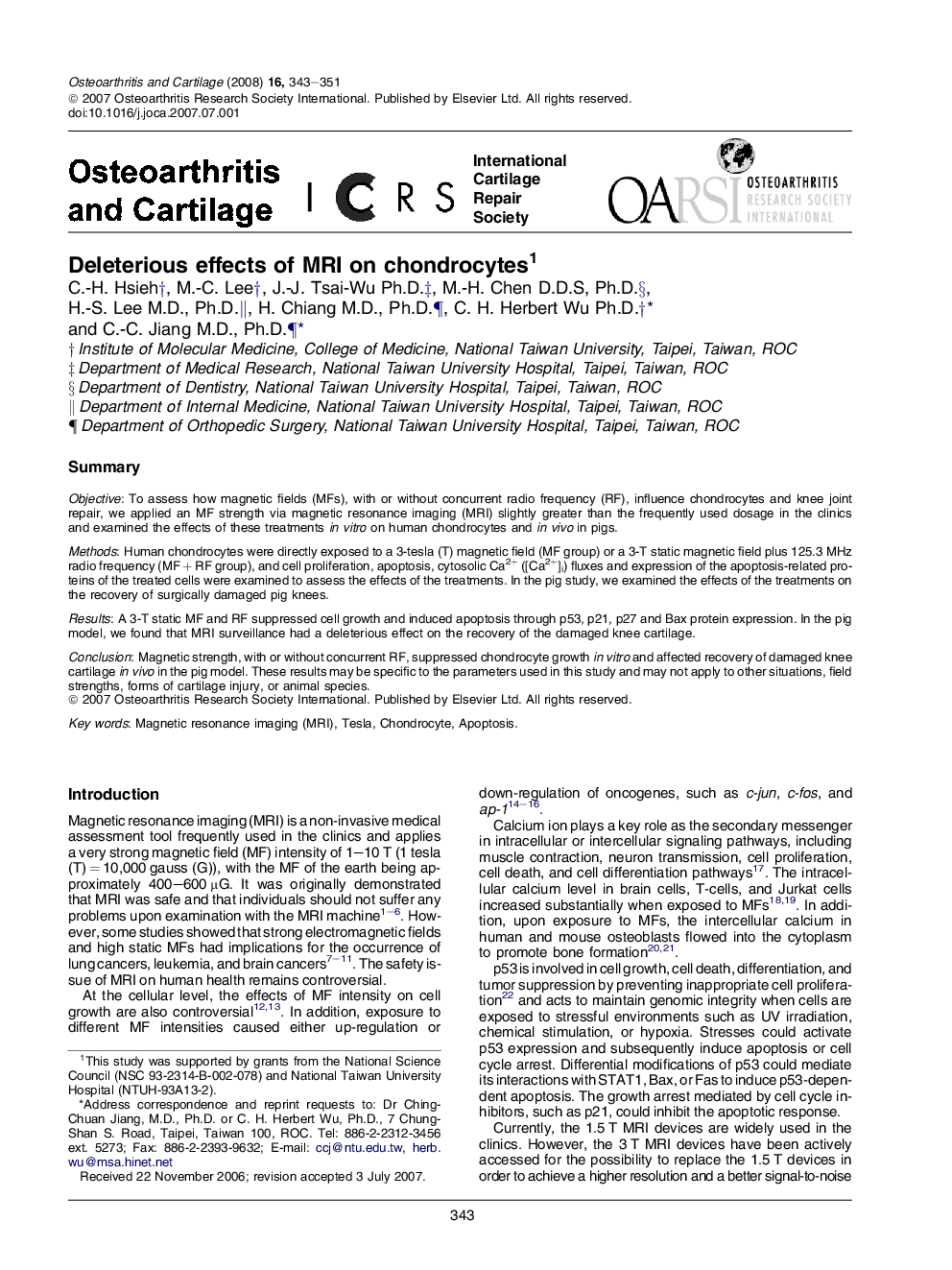| Article ID | Journal | Published Year | Pages | File Type |
|---|---|---|---|---|
| 3381151 | Osteoarthritis and Cartilage | 2008 | 9 Pages |
SummaryObjectiveTo assess how magnetic fields (MFs), with or without concurrent radio frequency (RF), influence chondrocytes and knee joint repair, we applied an MF strength via magnetic resonance imaging (MRI) slightly greater than the frequently used dosage in the clinics and examined the effects of these treatments in vitro on human chondrocytes and in vivo in pigs.MethodsHuman chondrocytes were directly exposed to a 3-tesla (T) magnetic field (MF group) or a 3-T static magnetic field plus 125.3 MHz radio frequency (MF + RF group), and cell proliferation, apoptosis, cytosolic Ca2+ ([Ca2+]i) fluxes and expression of the apoptosis-related proteins of the treated cells were examined to assess the effects of the treatments. In the pig study, we examined the effects of the treatments on the recovery of surgically damaged pig knees.ResultsA 3-T static MF and RF suppressed cell growth and induced apoptosis through p53, p21, p27 and Bax protein expression. In the pig model, we found that MRI surveillance had a deleterious effect on the recovery of the damaged knee cartilage.ConclusionMagnetic strength, with or without concurrent RF, suppressed chondrocyte growth in vitro and affected recovery of damaged knee cartilage in vivo in the pig model. These results may be specific to the parameters used in this study and may not apply to other situations, field strengths, forms of cartilage injury, or animal species.
